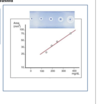Lecture 7 and 8: Diagnosis of Viral Diseases Flashcards
(106 cards)
What are the purposes of viral disease diagnosis?
- Surveillance of viral diseases among certain population
- Identify the causative agent of certain suspected clinical cases of viral origin
- To monitor the progress of some viral diseases
- To monitor the antigenic/genetic variations of certain virus
- To help in the design of the right vaccine against the homologous circulating strains of viruses
What is the direct approach to viral diagnosis?
Identifying the virus or viral products (such as proteins,
nucleic acids) in clinical samples or after virus isolation
from clinical samples
What is the indirect approach to viral diagnosis?
Detecting an immunological response to the virus (detect antibodies)
What are the viral diagnosis strategies?
Detection of virus
Isolation of viruses
Detection of viral antigens
Detection of viral antibodies
Virus infectivity titration
Detection of viral genomes

Ways specimens are evaluated.

What are the strategies to approach viral diagnostics?

What are the approach approach/ type of speciment in viral diagnostics? What notes are there about each way?

What is the rational behind viral diagnosis at the heard level/ individual animal level?
- Management of the animal or its prognosis is influenced by the diagnosis
- Rapid and accurate diagnosis of the causative virus can be the basis for establishing the management plan
(Biosecurity, vaccination, antimicrobial treatment)
What is the rational behind certification of freedom from specific viral life long infections or proof of vaccination (BLV, BVDV, EIAV) level?
-These certificates or vaccines are mandatory for animal travelling, participation in certain exhibition, or show for sale
-Artificial insemination, embryo transfer, and blood transfusion
-Male used for semen collection, female used for embryo transfer, blood donor animals should be screened for wide range of
viral infections (EAV, EIAV, BLV, etc)
-Zoonotic viruses: (RVfV, Rabies, WNV, EEEV, Hendra virus, etc)
-All these animals require screening and testing as well as veterinary care
What is the rational behind viral diagnosis at the State, country and International level?
- Test and removal programs for some viruses such as (MDV, EIAV, BHV-1, BVDV)
- Surveillance programs in support to enzootic diseases research control activates
- Surveillance programs in support to exotic diseases research control activates
IV- Prevention of new emerging and re-emerging diseases
?
What are the kinds of sample collections for these vaccines at the postmortem and antemortem level?

What should be considered during sample collection?
- Proper site of collection
- Right time
- Suitable volume/quantity
What should be considered during transportation of viral samples?
- Viral transport media (VTM)
- Antibiotic/antifungal cocktail
- Sterile containers
What should be considered for sample preservation?
- Proper preservation temperature
- Avoid freezing and thawing
What are the uses of light microscopy in diagnostic virology?
- To monitor the growth and multiplication of cell culture
- To monitor the viral infection in cell culture (CPE)
• Detection of viral inclusion bodies (TBDL)
- To study the histopathological changes of some viral infected tissues
- Immuno-histo-chemistry: Rabies virus antigen (brown dots)

What can be seen in this image?

In most other cases viruses are _______ in cell culture before they can be visualized by ____
isolated, EM
What is the virus surrounded by ? What are these substances? What happens when we stain these particles?
Virus is surrounded by electron dense (electron opaque) material
-2% uranyl acetate,
-1-3% sodium or
-potassium tungstate
Electrons are scattered from regions covered with stain thus creating a contrast which outlines viral structures
What are the advantages of EM in diagnostic virology?
- Can detect the virus in body secretions and execrations
- Do not require special reagents such as proteins standard, etc
- No cross reaction with other similar viruses
- Rapid technique
What are the disadvantages of diagnostic virology?
-Less sensitive than other tests: requires high
virus concentration
-The EM machine is expensive
-Requires expert personnel to do interpretation
What is true/ good about scanning electron microscopes?
- Lower resolution of tens of nm
- Shows only morphology of specimens.
- cheap
- Relatively safe.
What is some pros and cons to transmission electron microscopy?
- Higher resolution of 1 nm or less
- Shows multiple characteristics of objects such as crystalization, morphology, stress and much more.
- Specimen preparation requires thinning which is tiring and time consuming.
- Expensive
- Relatively harmful to human health



















































